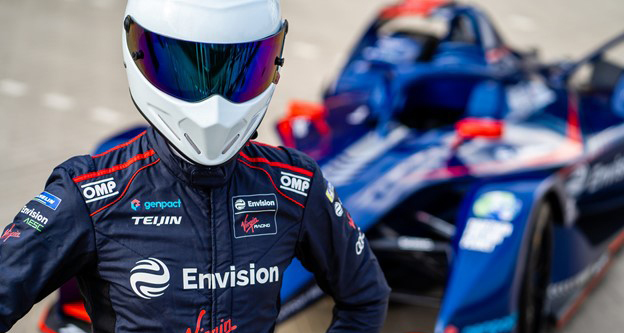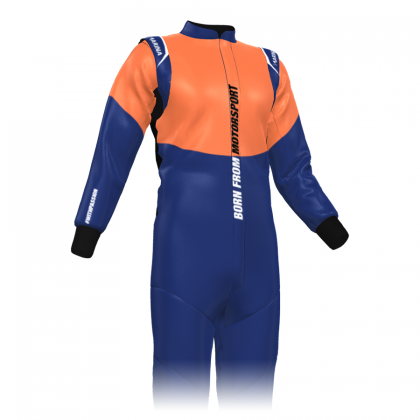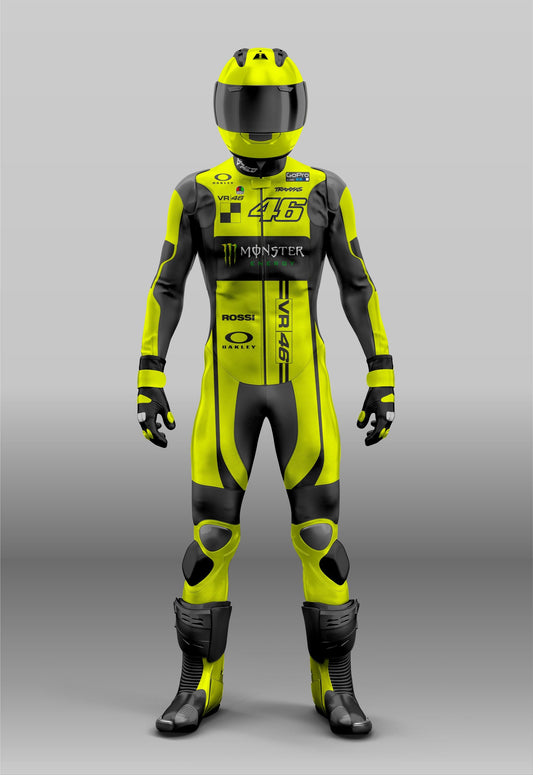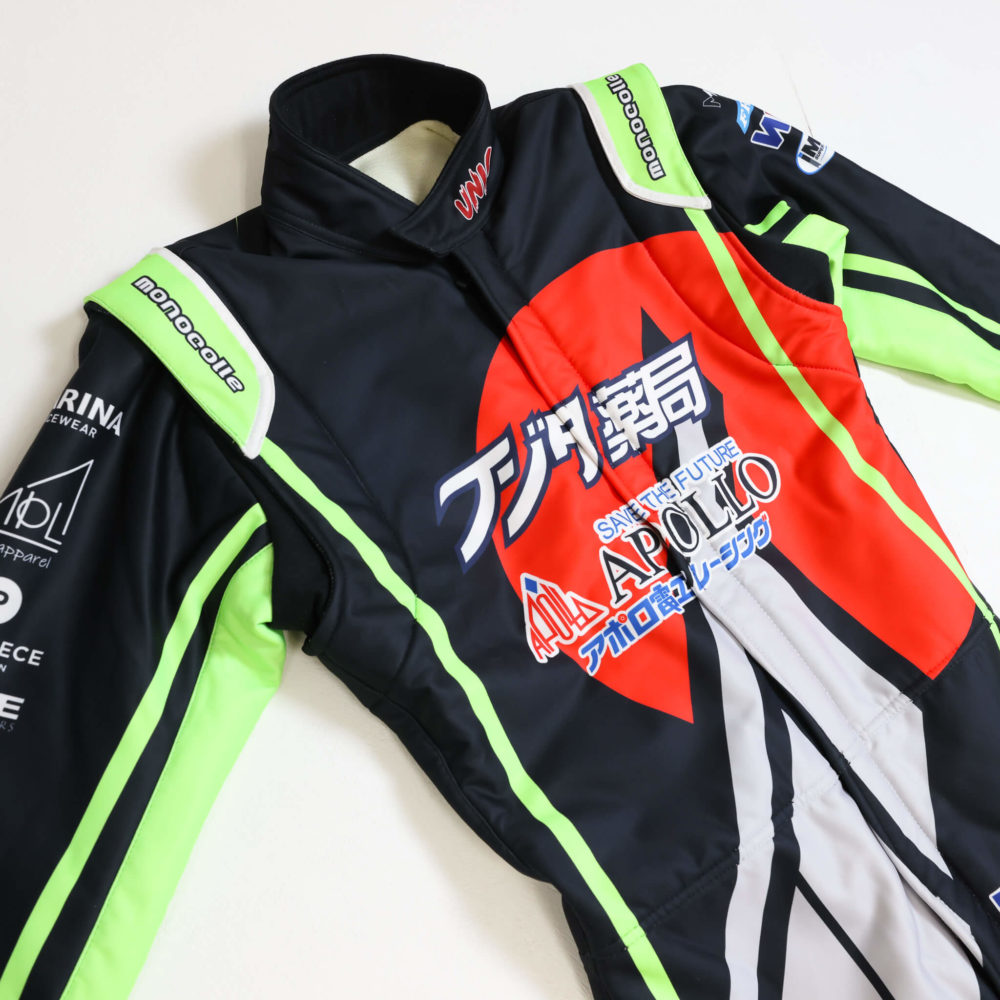5 Ways How Harsh Racing Apparel Is Revolutionizing Fashion in MotoSPRT
The world of motorsport is not just about speed, precision, and strategy; it’s also a fashion-forward industry. Over the years, racing apparel has evolved, becoming a blend of cutting-edge technology and style. While the primary function of racing apparel is to ensure driver safety and enhance performance, today’s racing gear is also a reflection of personal identity, sponsorship, and the growing influence of fashion trends within the motorsport industry.
In this article, we will explore five key ways racing apparel is revolutionizing the world of motorsport fashion. From the materials used to the design of race suits, gloves, and helmets, racing apparel has come a long way. Not only has it become more functional, but it has also become an essential part of the driver’s image, impacting the way fans and professionals alike view the sport.
So buckle up, because we’re about to take you on a high-speed ride through the stylish side of motorsport apparel!
1. Cutting-Edge Materials: The Future of Racing Apparel
One of the most significant advancements in racing apparel has been the use of cutting-edge materials designed for safety, comfort, and performance. From fire-resistant fabrics to lightweight composites, the materials used in modern racing gear are engineered to withstand extreme conditions while enhancing the driver’s performance on the track.
Fire-Resistant Fabrics: A Lifesaving Innovation
In the past, drivers had to rely on traditional fabrics that were not designed to withstand the intense heat generated by the high-speed collisions and the extreme conditions of the racetrack. Today, racing suits are made from Nomex, a fire-resistant material that has become a standard in motorsport apparel. Developed by DuPont, Nomex is a heat- and flame-resistant material that provides an essential layer of protection in the event of a crash.
Beyond just providing protection, Nomex is also lightweight and breathable, allowing drivers to perform at their peak without overheating. The advent of this material has made it possible for drivers to wear racing apparel that is not only functional but also comfortable, reducing distractions during high-pressure moments.
Lightweight Composites: Enhancing Comfort Without Sacrificing Performance
As motorsport continues to advance, there’s a growing demand for lighter, more flexible materials that don’t compromise safety. This has led to the incorporation of lightweight composites such as carbon fiber and Kevlar in racing helmets, gloves, and suits. These materials offer superior protection while significantly reducing the weight of the gear.
For example, carbon fiber is used in racing helmets to provide a durable outer shell that is both lightweight and extremely strong. In addition to reducing the overall weight, these materials help increase the driver’s comfort during long races, enabling them to focus on performance without feeling weighed down by bulky gear.
Moisture-Wicking Fabrics: Keeping Drivers Cool Under Pressure
In addition to providing protection, modern racing apparel is designed to regulate the driver’s body temperature. Moisture-wicking fabrics have become an essential feature in racing suits and undergarments. These fabrics draw sweat away from the skin and allow it to evaporate, keeping drivers cool and dry even in the hottest conditions. This innovation has been particularly important as races in hotter climates, like the Formula 1 Grand Prix in Singapore, become more common.
As these fabrics improve, drivers now have access to racing apparel that not only keeps them safe but also optimizes their performance by ensuring they stay as comfortable and focused as possible.
2. Personalized Designs: Racing Apparel as a Reflection of Identity
As motorsport continues to grow in popularity, drivers have increasingly turned to racing apparel as a platform to express their identity, brand, and personality. Gone are the days of one-size-fits-all uniforms—today, racing suits, helmets, and gloves are highly customizable, allowing drivers to stand out on and off the track.
Customization: Drivers as Brands
In the past, motorsport apparel was primarily functional, with drivers wearing standard-issue gear from their teams or sponsors. However, as the sport became more commercialized, drivers began to use their racing apparel as a way to market themselves as individual brands. This shift is especially evident in Formula 1, where the visibility of drivers’ brands plays a crucial role in attracting sponsorships.
Today, a driver’s racing suit is often designed in collaboration with sponsors and personal stylists to reflect the driver’s unique identity. Logos, colors, and even custom designs are incorporated into the apparel, transforming it into a form of personal expression. This trend is not just about looking good on the track but also about creating a lasting impression with fans and sponsors alike.
The Rise of Custom Helmets and Gloves
Custom-designed helmets have become one of the most visible expressions of a driver’s identity. Drivers often choose colors, patterns, and even personal symbols that represent their character, country, or beliefs. For example, Sebastian Vettel has been known for his colorful and unique helmet designs, often incorporating symbols or quotes that hold personal meaning.
Additionally, custom gloves have gained popularity, with many drivers adding unique designs, patterns, or messages to reflect their personal style. These customizations allow drivers to connect with their fans on a more personal level, making racing apparel an integral part of the sport's visual culture.

Caption: Custom designs in racing apparel, from helmets to suits, allow drivers to express their personal style and create a brand identity.
3. High-Tech Features: From Data Collection to Performance Enhancement
In recent years, racing apparel has become more than just protective gear—it’s now integrated with advanced technologies aimed at improving a driver’s performance and monitoring their health. Wearable tech and smart fabrics have entered the world of motorsport, opening new doors for innovation in racing apparel.
Wearable Technology: Tracking Performance in Real-Time
The use of wearable technology in motorsport is one of the most significant advancements in recent years. Formula 1 teams, for example, use smart suits that are embedded with sensors to monitor the driver’s heart rate, temperature, and oxygen levels in real-time. These sensors provide valuable data to engineers, allowing them to make decisions about tire pressure, fuel efficiency, and even race strategies based on the driver’s condition.
By integrating wearable technology into racing apparel, teams are not only improving performance but also enhancing driver safety. In the future, smart fabrics embedded with sensors could even detect early signs of fatigue, allowing drivers to take necessary precautions before health becomes a concern.
Driver Monitoring Systems: Enhancing Safety and Performance
Another racing apparel innovation involves the integration of driver monitoring systems into their gear. For instance, smart helmets equipped with advanced sensors can track a driver’s head movements and g-force exposure. This data can then be analyzed to help optimize the helmet design and improve protection during high-speed impacts.
These advancements provide a dual benefit: they improve driver performance and ensure safety by continuously monitoring their well-being throughout a race. As technology continues to evolve, we can expect even more sophisticated systems in racing apparel that can track more metrics and further enhance both driver safety and performance.
4. Sustainability in Racing Apparel: A Greener Future for Motorsport
As the world becomes more aware of the need for sustainability, motorsport has not been left behind in the race toward greener solutions. Over the last few years, sustainable materials have begun to make their way into racing apparel, offering drivers and teams eco-friendly options that still meet the demanding needs of the sport.
Eco-Friendly Materials: Racing Apparel Meets Sustainability
One of the most significant innovations in racing apparel is the use of sustainable materials. Brands are increasingly turning to recycled fibers and bio-based fabrics to create racing suits and gear that are both high-performance and environmentally responsible. Recycled polyester and nylon are now used to make durable, lightweight suits that still provide the same level of protection as traditional materials like Nomex.
Additionally, manufacturers are working on bio-based flame-retardant fabrics that offer the same level of safety as synthetic materials but with a lower environmental impact. This shift towards sustainability in motorsport apparel is part of the broader effort to reduce the sport’s carbon footprint and contribute to a greener future.
The Rise of Eco-Friendly Brands in Motorsport
In recent years, several motorsport apparel brands have made sustainability a key part of their business model. These brands are committed to producing racing suits, helmets, and gloves using eco-friendly practices, helping to promote environmental consciousness in the motorsport world.
These initiatives are not only important for reducing waste but also for inspiring fans to think about the environment. As the motorsport industry continues to innovate, we can expect more racing apparel manufacturers to adopt sustainable practices, making it easier for drivers to race with a conscience.
Caption: Eco-friendly racing apparel made from recycled materials is helping motorsport teams reduce their carbon footprint while maintaining the highest safety standards.
5. Racing Apparel as a Cultural Phenomenon
In addition to its practical applications, racing apparel has become an integral part of the culture surrounding motorsport. It’s not just about functionality—racing gear has evolved into a symbol of team loyalty, national pride, and even fashion statements. The influence of motorsport fashion extends far beyond the racetrack, infiltrating streetwear and everyday fashion.
From the Track to the Streets: Racing Apparel as a Fashion Statement
The trend of motorsport-inspired fashion has been steadily growing in recent years. Brands are increasingly incorporating motorsport aesthetics into their streetwear collections, offering fans the chance to wear replicas of their favorite driver’s racing gear or team apparel. This crossover between racing and fashion has helped bring motorsport to a new audience, blending functionality with style.
Global Influence of Motorsport Apparel
As the popularity of motorsport continues to grow globally, so does the influence of racing apparel on fashion trends. Fans not only wear racing-inspired jackets, t-shirts, and caps, but many also embrace the bold, energetic style of racing uniforms in everyday life. From Formula 1 to NASCAR, MotoGP, and rally racing, motorsport apparel has become a universal symbol of speed, passion, and excitement.

Caption: Racing apparel has transitioned from the racetrack to street fashion, with brands blending performance and style for fans worldwide.
Conclusion: Racing Apparel’s Bright Future
Racing apparel has come a long way since its humble beginnings. What was once merely functional gear designed for safety is now a stylish, high-tech, and sustainable part of the sport. From the cutting-edge materials that ensure driver safety to the customization that reflects a driver’s personality, racing apparel has truly evolved into an essential aspect of motorsport culture.
As technology continues to advance, motorsport apparel will continue to push boundaries, integrating more sustainable practices, smart technology, and fashion-forward designs. The future of racing gear is not only about performance but also about creating a stronger connection between drivers, fans, and the sport itself.
If you’re a motorsport fan looking to show off your passion, be sure to check out our custom racing gear. From high-quality racing apparel to stylish fan merchandise, we’ve got something for every motorsport enthusiast. Wear your love for the sport with pride—order your custom gear today!
The world of motorsport is not just about speed, precision, and strategy; it’s also a fashion-forward industry. Over the years, racing apparel has evolved, becoming a blend of cutting-edge technology and style. While the primary function of racing apparel is to ensure driver safety and enhance performance, today’s racing gear is also a reflection of personal identity, sponsorship, and the growing influence of fashion trends within the motorsport industry.
In this article, we will explore five key ways racing apparel is revolutionizing the world of motorsport fashion. From the materials used to the design of race suits, gloves, and helmets, racing apparel has come a long way. Not only has it become more functional, but it has also become an essential part of the driver’s image, impacting the way fans and professionals alike view the sport.
So buckle up, because we’re about to take you on a high-speed ride through the stylish side of motorsport apparel!
1. Cutting-Edge Materials: The Future of Racing Apparel
One of the most significant advancements in racing apparel has been the use of cutting-edge materials designed for safety, comfort, and performance. From fire-resistant fabrics to lightweight composites, the materials used in modern racing gear are engineered to withstand extreme conditions while enhancing the driver’s performance on the track.
Fire-Resistant Fabrics: A Lifesaving Innovation
In the past, drivers had to rely on traditional fabrics that were not designed to withstand the intense heat generated by the high-speed collisions and the extreme conditions of the racetrack. Today, racing suits are made from Nomex, a fire-resistant material that has become a standard in motorsport apparel. Developed by DuPont, Nomex is a heat- and flame-resistant material that provides an essential layer of protection in the event of a crash.
Beyond just providing protection, Nomex is also lightweight and breathable, allowing drivers to perform at their peak without overheating. The advent of this material has made it possible for drivers to wear racing apparel that is not only functional but also comfortable, reducing distractions during high-pressure moments.
Lightweight Composites: Enhancing Comfort Without Sacrificing Performance
As motorsport continues to advance, there’s a growing demand for lighter, more flexible materials that don’t compromise safety. This has led to the incorporation of lightweight composites such as carbon fiber and Kevlar in racing helmets, gloves, and suits. These materials offer superior protection while significantly reducing the weight of the gear.
For example, carbon fiber is used in racing helmets to provide a durable outer shell that is both lightweight and extremely strong. In addition to reducing the overall weight, these materials help increase the driver’s comfort during long races, enabling them to focus on performance without feeling weighed down by bulky gear.
Moisture-Wicking Fabrics: Keeping Drivers Cool Under Pressure
In addition to providing protection, modern racing apparel is designed to regulate the driver’s body temperature. Moisture-wicking fabrics have become an essential feature in racing suits and undergarments. These fabrics draw sweat away from the skin and allow it to evaporate, keeping drivers cool and dry even in the hottest conditions. This innovation has been particularly important as races in hotter climates, like the Formula 1 Grand Prix in Singapore, become more common.
As these fabrics improve, drivers now have access to racing apparel that not only keeps them safe but also optimizes their performance by ensuring they stay as comfortable and focused as possible.
2. Personalized Designs: Racing Apparel as a Reflection of Identity
As motorsport continues to grow in popularity, drivers have increasingly turned to racing apparel as a platform to express their identity, brand, and personality. Gone are the days of one-size-fits-all uniforms—today, racing suits, helmets, and gloves are highly customizable, allowing drivers to stand out on and off the track.
Customization: Drivers as Brands
In the past, motorsport apparel was primarily functional, with drivers wearing standard-issue gear from their teams or sponsors. However, as the sport became more commercialized, drivers began to use their racing apparel as a way to market themselves as individual brands. This shift is especially evident in Formula 1, where the visibility of drivers’ brands plays a crucial role in attracting sponsorships.
Today, a driver’s racing suit is often designed in collaboration with sponsors and personal stylists to reflect the driver’s unique identity. Logos, colors, and even custom designs are incorporated into the apparel, transforming it into a form of personal expression. This trend is not just about looking good on the track but also about creating a lasting impression with fans and sponsors alike.
The Rise of Custom Helmets and Gloves
Custom-designed helmets have become one of the most visible expressions of a driver’s identity. Drivers often choose colors, patterns, and even personal symbols that represent their character, country, or beliefs. For example, Sebastian Vettel has been known for his colorful and unique helmet designs, often incorporating symbols or quotes that hold personal meaning.
Additionally, custom gloves have gained popularity, with many drivers adding unique designs, patterns, or messages to reflect their personal style. These customizations allow drivers to connect with their fans on a more personal level, making racing apparel an integral part of the sport's visual culture.

Caption: Custom designs in racing apparel, from helmets to suits, allow drivers to express their personal style and create a brand identity.
3. High-Tech Features: From Data Collection to Performance Enhancement
In recent years, racing apparel has become more than just protective gear—it’s now integrated with advanced technologies aimed at improving a driver’s performance and monitoring their health. Wearable tech and smart fabrics have entered the world of motorsport, opening new doors for innovation in racing apparel.
Wearable Technology: Tracking Performance in Real-Time
The use of wearable technology in motorsport is one of the most significant advancements in recent years. Formula 1 teams, for example, use smart suits that are embedded with sensors to monitor the driver’s heart rate, temperature, and oxygen levels in real-time. These sensors provide valuable data to engineers, allowing them to make decisions about tire pressure, fuel efficiency, and even race strategies based on the driver’s condition.
By integrating wearable technology into racing apparel, teams are not only improving performance but also enhancing driver safety. In the future, smart fabrics embedded with sensors could even detect early signs of fatigue, allowing drivers to take necessary precautions before health becomes a concern.
Driver Monitoring Systems: Enhancing Safety and Performance
Another racing apparel innovation involves the integration of driver monitoring systems into their gear. For instance, smart helmets equipped with advanced sensors can track a driver’s head movements and g-force exposure. This data can then be analyzed to help optimize the helmet design and improve protection during high-speed impacts.
These advancements provide a dual benefit: they improve driver performance and ensure safety by continuously monitoring their well-being throughout a race. As technology continues to evolve, we can expect even more sophisticated systems in racing apparel that can track more metrics and further enhance both driver safety and performance.
4. Sustainability in Racing Apparel: A Greener Future for Motorsport
As the world becomes more aware of the need for sustainability, motorsport has not been left behind in the race toward greener solutions. Over the last few years, sustainable materials have begun to make their way into racing apparel, offering drivers and teams eco-friendly options that still meet the demanding needs of the sport.
Eco-Friendly Materials: Racing Apparel Meets Sustainability
One of the most significant innovations in racing apparel is the use of sustainable materials. Brands are increasingly turning to recycled fibers and bio-based fabrics to create racing suits and gear that are both high-performance and environmentally responsible. Recycled polyester and nylon are now used to make durable, lightweight suits that still provide the same level of protection as traditional materials like Nomex.
Additionally, manufacturers are working on bio-based flame-retardant fabrics that offer the same level of safety as synthetic materials but with a lower environmental impact. This shift towards sustainability in motorsport apparel is part of the broader effort to reduce the sport’s carbon footprint and contribute to a greener future.
The Rise of Eco-Friendly Brands in Motorsport
In recent years, several motorsport apparel brands have made sustainability a key part of their business model. These brands are committed to producing racing suits, helmets, and gloves using eco-friendly practices, helping to promote environmental consciousness in the motorsport world.
These initiatives are not only important for reducing waste but also for inspiring fans to think about the environment. As the motorsport industry continues to innovate, we can expect more racing apparel manufacturers to adopt sustainable practices, making it easier for drivers to race with a conscience.

Caption: Eco-friendly racing apparel made from recycled materials is helping motorsport teams reduce their carbon footprint while maintaining the highest safety standards.
5. Racing Apparel as a Cultural Phenomenon
In addition to its practical applications, racing apparel has become an integral part of the culture surrounding motorsport. It’s not just about functionality—racing gear has evolved into a symbol of team loyalty, national pride, and even fashion statements. The influence of motorsport fashion extends far beyond the racetrack, infiltrating streetwear and everyday fashion.
From the Track to the Streets: Racing Apparel as a Fashion Statement
The trend of motorsport-inspired fashion has been steadily growing in recent years. Brands are increasingly incorporating motorsport aesthetics into their streetwear collections, offering fans the chance to wear replicas of their favorite driver’s racing gear or team apparel. This crossover between racing and fashion has helped bring motorsport to a new audience, blending functionality with style.
Global Influence of Motorsport Apparel
As the popularity of motorsport continues to grow globally, so does the influence of racing apparel on fashion trends. Fans not only wear racing-inspired jackets, t-shirts, and caps, but many also embrace the bold, energetic style of racing uniforms in everyday life. From Formula 1 to NASCAR, MotoGP, and rally racing, motorsport apparel has become a universal symbol of speed, passion, and excitement.

Caption: Racing apparel has transitioned from the racetrack to street fashion, with brands blending performance and style for fans worldwide.
Conclusion: Racing Apparel’s Bright Future
Racing apparel has come a long way since its humble beginnings. What was once merely functional gear designed for safety is now a stylish, high-tech, and sustainable part of the sport. From the cutting-edge materials that ensure driver safety to the customization that reflects a driver’s personality, racing apparel has truly evolved into an essential aspect of motorsport culture.
As technology continues to advance, motorsport apparel will continue to push boundaries, integrating more sustainable practices, smart technology, and fashion-forward designs. The future of racing gear is not only about performance but also about creating a stronger connection between drivers, fans, and the sport itself.
If you’re a motorsport fan looking to show off your passion, be sure to check out our custom racing gear. From high-quality racing apparel to stylish fan merchandise, we’ve got something for every motorsport enthusiast. Wear your love for the sport with pride—order your custom gear today!
SHARE
Leave a comment
Related post
SUBSCRIBE & GET FREE SHIPPING
Get a FREE shipping code when you subscribe.
SUPPORT
POLICIES
INFOMATIONS
Fair Use Statement
These fan-created designs, celebrating racing legends and their achievements, are intended for personal enjoyment and artistic appreciation. Trademarks or official branding are used descriptively, without suggesting official endorsements.





0 comment
Be the first to comment